SunArch Sunpath Editor Program
Authors: Professor Gellert Kuba PhD, dipl. eng. architect and BAUSOFT PECSVARAD Ltd.
This program is capable of visualising space the virtual path of the sun at any given point on the earth surface. It may be implemented with photos and thus be used in the course of architectural design for defining the insolation of buildings, the extent of their shading in order to protect them from overheating and also for the optimal positioning of sun collectors.
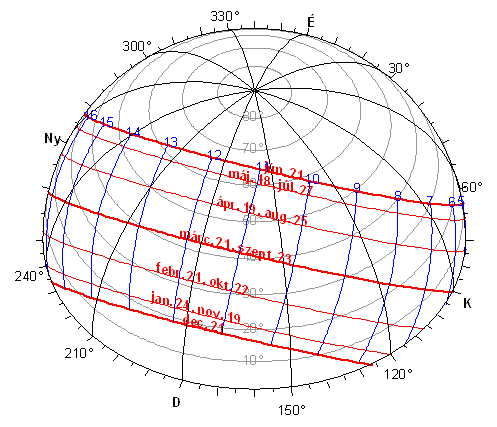
The determining of the insolation of buildings is indispensable from the point of view of their energy consumption and the vital function of those living in them. Natural light biologically controls the state of health of every living organisms.
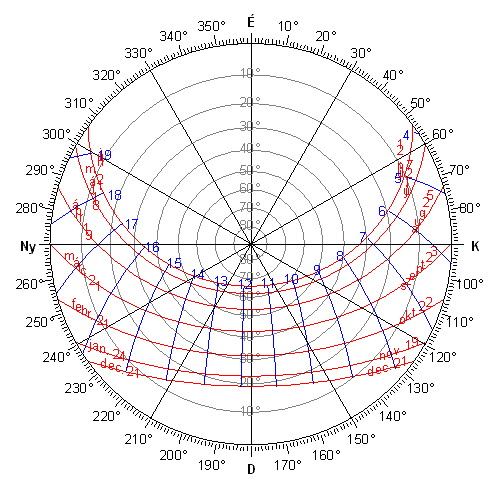
The amount of vital hormones produced by our body is increased or decreased according to the amount of sunlight it receives. Therefore the optimal insolation of closed spaces, created by architecture is indispensable, all the more so because the population of the so called civilised countries spends 80-90 % of its life time shut away from sunlight. Our body in need of a given amount of sunlight suffers drastic changes from excessive artificial light. Artificial light enables us to see but the wave lengths that are indispensable for maintaining a healthy immune system are missing from its spectrum. The production of hormones in our body will be influenced to such an extent as the spectrum of artificial light differs from that of sunlight. There is no such artificial light which is capable of replacing natural light and as it is harmful to our organism it is utmost importance to create the optimal insolation of built spaces.
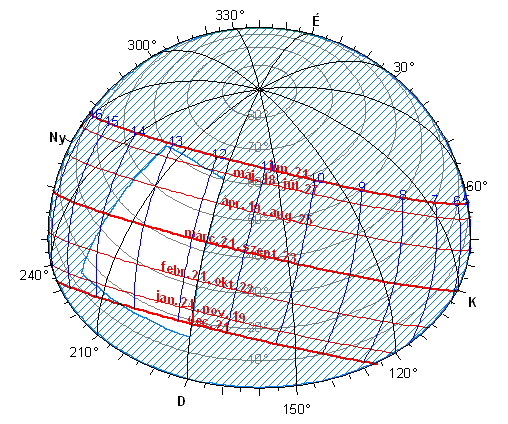
We can examine insolation at a given point of the room, if we project the opening trough which light enters the premise. The expected duration of sunlight can be read from the red coloured sunpaths lying within the projected opening. The program contains the geographical co-ordinates of Hungarian settlements and it automatically modifies local time to the relevant sidereal time. It is also possible to adjust by means of the program the summer timing.
The angle of incidence of sunbeams can be studied by turning the incidence protractor. The quality of the rooms actual insolation depends on the angle of the sunlight's incidence.
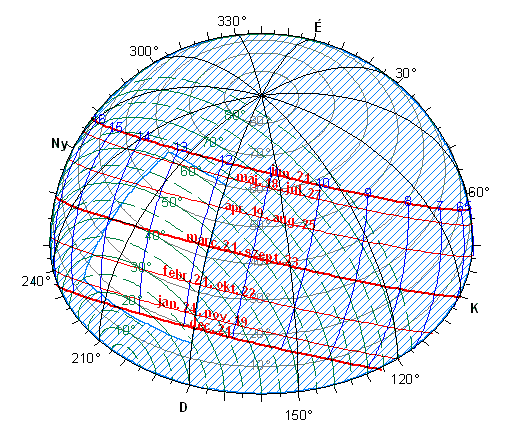
Beams steeper than 60° do not come trough glazed surfaces, therefore from the point of view of insolation these rays are useless and as from the point of view of overheating, they are not to be considered harmful.
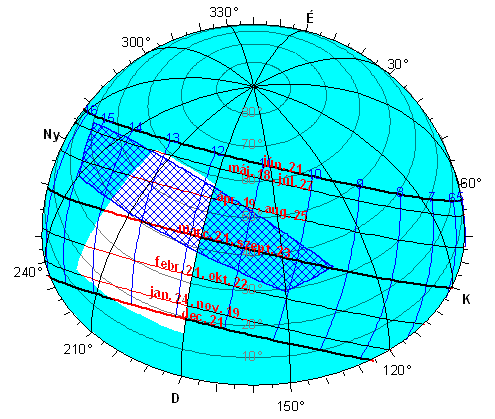
The actual efficiency of a glazed surface can only be checked if we also describe the image projected on the sky, the shading device or balcony above the surface in question. The opening which seemed to be quite promising on our ground plan from the point of view of light admission, according to our program is far from being able to fulfil expectation since that part of the sky has been covered by the shading device or the balcony which is of the biggest light density. Thus it is only by means of this program that we can thoroughly examine the different aspects of a building's insolation and come to a correct conclusion as to the positioning of glazed openings and shading devices and balconies on our buildings.
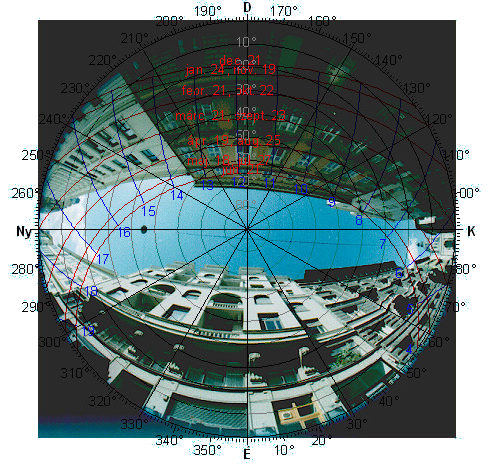
We can also describe and examine trough our program the image projected onto the sky of objects surrounding the planned building. That is, the program will show us - provided we dispose of all data relevant to the surrounding area - how much of the skyline will be left clear for our future building. Since the visualisation of more complex silhouettes - such as those with dense vegetation etc. - is rather difficult, and time consuming the program also offers a possibility for calculating the optimum insolation of a building, by means of a photographic process, where the photo of the space surrounding the building is question may be joined to the sunpaths of the skyline, in this wary outlines of the open skyline will become clearly visible.
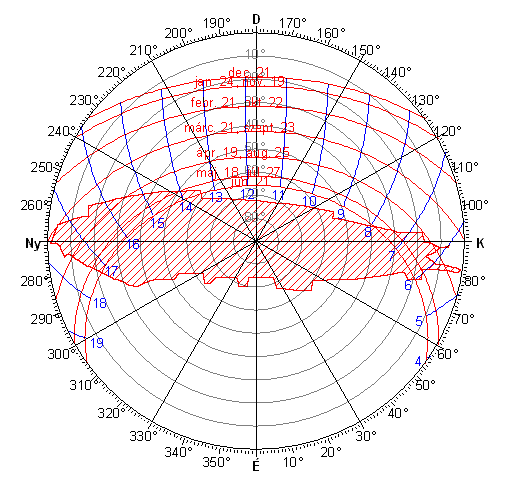
Other abstracts:
- Solar energy impact by orientation
- Maximum solar energy produced by the proper orientation of collectors
- Protection of buildings against overheating
Last modification: 28. May 2008.